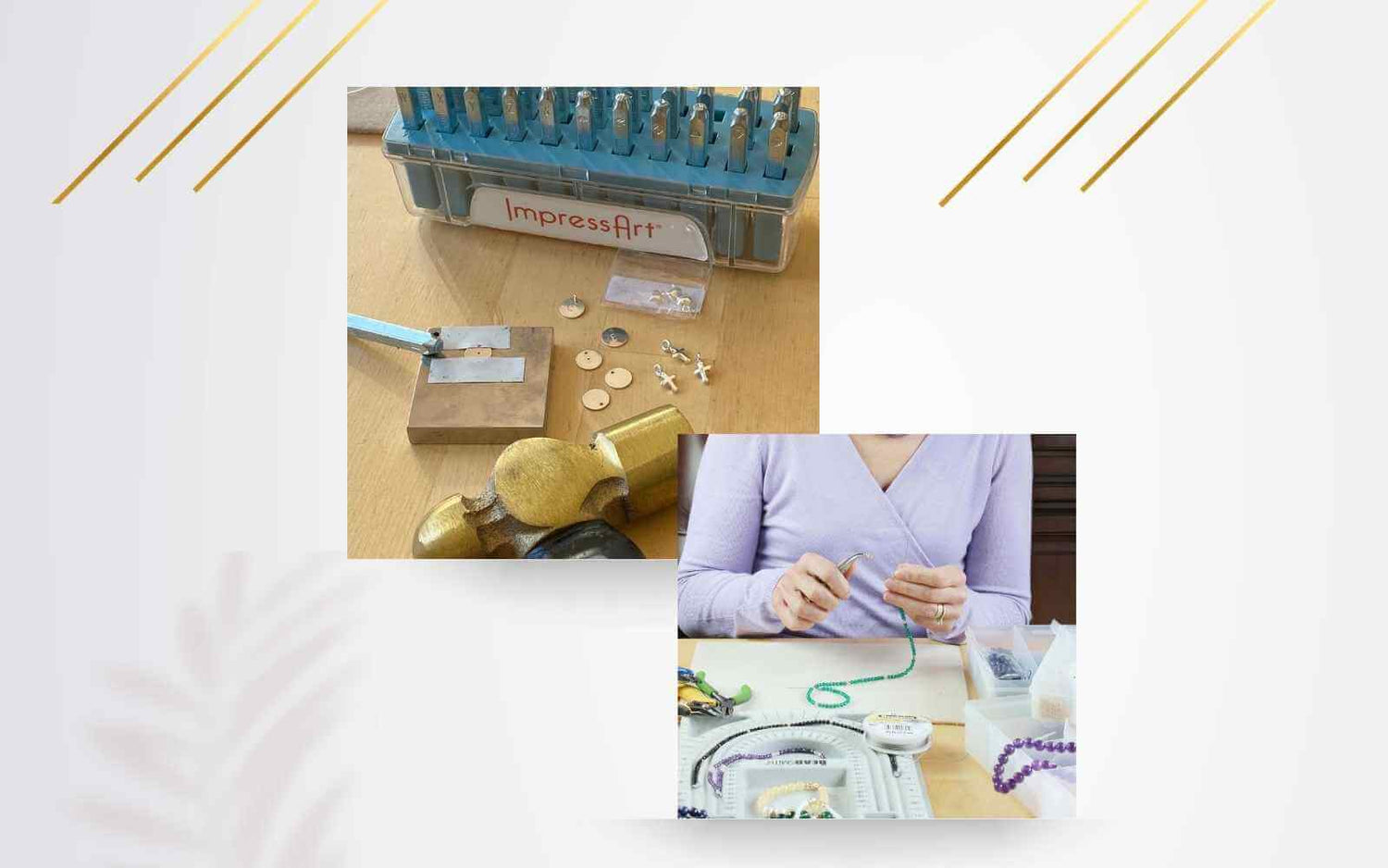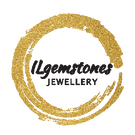
Handmade Jewellery Ireland - Top 7 Reasons to Make a Choice
In the world of mass production today, the significance of handmade jewellery Ireland has never been more important. Handmade is not a buzzword, it is a genuine and authentic representation of the piece you are investing in - made by hand. Great changes in technology meant that jewellery could be more elaborate at a low cost. However, with time, the way we shop and wear jewellery has changed. Handmade jewellery has all of the character and personality that the mass-produced pieces lack. Curious why consumers are moving towards a preference for handmade jewellery versus mass-produced jewellery? Find out what is considered handmade jewellery in Ireland, how it evolved and the reasons to choose to buy and wear handmade jewellery.
What is Handmade Jewellery?
Handmade jewellery is jewellery that has been assembled and formed by hand rather than through the use of mass manufacturing machines. It can range from simple hand-assembled necklaces, bracelets and earrings to intricate designs that take hours or days and skilled techniques to finish. What they all have in common is that a jewellery maker produces each piece using their hands and simple tools.
Handmade Jewellery Ireland Techniques
There are many different handmade jewellery-making techniques used today in Ireland depending on the materials, designs and makers’ expertise and preferences. We have specialised in these techniques which are suited for semi-precious stones and precious metals.
- Handmade beaded jewellery - involves stringing gemstones or beads and creating single-strand necklaces and bracelets or more complicated designs with multiple strands.
- Hand-assembled jewellery - involves creating necklaces, earrings, and bracelets with pre-made charms, chains and jewellery findings like clasps, crimps and crimp covers. It offers the option of creating unique jewellery at affordable prices.
- Wire-wrapped jewellery - ranges from wire-wrapping pendants or charms with gemstones to wire-weaving techniques that are quite time-consuming. Wire wrapping takes time and practice to master. Depending on the design, makers can use a few different gauges of wire.
- Hand stamped jewellery -is one of the most popular types of handmade jewellery in Ireland today. Designs are created by hammering a metal stamp onto a metal blank with a heavy hammer. Simple tools and techniques are required to create a unique personalised jewellery piece.
- Hand-knotted jewellery – is a technique used for stringing pearls or semi-precious stones on a thread, usually silk. The knots separate the beads and protect them from damage.
How Has It Become Popular?
Top 7 Reasons to Choose Handmade Jewellery in Ireland
- No Mass Production Machinery - handmade jewellery is made by the maker’s hands without the use of mass-produced manufacturing machinery.
- The Value of Time - a machine can make hundreds of units per hour while an individual can only make a fraction of pieces at the same time. Knowing that a maker spends a significant amount of time working on a piece of jewellery just for you gives the piece a special meaning and value.
- The Maker’s Process - the makers have a close relationship with the designs they create as they are involved in each step of the process from design to the finished piece. They know each step and can react and correct it if needed. Unlike mass-produced items, handmade jewellery is more focused on creating long-lasting pieces rather than following trends.
- Materials - the essence of handmade jewellery Ireland is found in the use of natural materials since Celtic times. Materials used in a handmade piece are mostly of high quality and are sourced from reputable suppliers. The materials used have a great impact on the finished product and help perfectly showcase the design. It is important to understand those small makers are not able to achieve the same price for their supplies compared to large companies. Very often it is difficult to know exactly what alloys are used in mass-produced pieces.
- Quality - Small-scale production is almost always higher quality because the ability to track and control the process from start to finish is integral to the making process. Makers are proud of their work and they would not let inferior quality pieces leave their studio. They know that every piece is not only a representation of their creativity but also of their integrity. Even if there is a problem with a product the maker will certainly want to fix it for you.
- Sustainability - mass-produced jewellery pieces carry many harmful impacts on your skin as well as on the environment. Makers are often dedicated to sustainability and ethically sourced materials. Keeping the making process small ensures that the footprint of a handmade product is small too. Your support of handmade jewellery Ireland is of huge value from a sustainability standpoint. Reducing your carbon footprint and supporting local makers are desirable for the environment and the community.
- Made Local with Love - the most effective way to keep small businesses open and keep the money in your community is to support local makers. Buying local and handmade is a big step in the right direction. Makers infuse love and energy into each piece of work. Whether you know them in person, or feel like you know them after learning their story, remember that your purchase supports a real person. The Irish Madelocal campaign organised by DCCI has highlighted the importance of supporting local businesses.
Important Things to Remember When Buying Handmade Jewellery
The quality and uniqueness of handmade jewellery are typically apparent to even the most casual observer. What makes a handmade piece so significant is its design and attention to detail, allowing it to withstand different fashion trends. You can certainly be comforted in the knowledge that a piece of handmade jewellery has been made by someone locally who has focused their creative thought, care and attention on every piece. Handmade Jewellery Ireland makers are focused on offering quality in every aspect while at the same time building a connection with the customers. Their studios and websites are typically a lot smaller and easier to navigate making the overall shopping process much more intimate and streamlined than with a big business.
History of Handmade Jewellery
Ireland has a long history of designing, producing and appreciating attractive handmade jewellery. Since the time of the Celts, it has been renowned all over the world as being a centre for excellence in crafts. We present you with a short overview of its development throughout the centuries.
Jewellery has been a universal form of adornment. More than 40,000 years ago people in Kenya, used perforated ostrich eggshells to make beads. In other parts of the world, there is evidence that the Cro-Magnon people wore bracelets and necklaces made of bones, teeth, berries and tusks.
From ancient times jewellery was worn as protection from the dangers of life or as a mark of status or rank. The discovery of how to work metals was an important stage in the development of the art of jewellery. It was buried with the dead to accompany its owner into the afterlife. Much archaeological jewellery comes from tombs.
The jewellery worn in medieval Europe reflected an intensely hierarchical and status-conscious society. Royalty and the nobility wore gold, silver and precious gemstones. Lower ranks of society wore base metals, such as copper or pewter. Some jewellery had cryptic or magical inscriptions protecting the wearer.
Renaissance jewellery shared the age's passion for splendour. The designs were inspired by mythological figures and scenes.
By the mid-17th century, changes in fashion had introduced new styles of jewellery. Elaborated gold jewellery with gemstones and pearls was popular as expanding global trade made gemstones more available.
The development of the brilliant cut with its multiple facets made diamonds sparkle as never before and came to dominate jewellery design in the 18th century.
The 19th century was a period of huge industrial and social change. This had a significant effect on lowering the cost of jewellery production and it became available to the majority of the population. As a consequence, the significance of jewellery as a status symbol was greatly reduced and it became much more of a fashion accessory. The beauty and quality of the jewellery also became greatly reduced as mass production took away almost all of the character of handmade jewellery. In jewellery design, the focus was often on the past evoking the glories of ancient Greece and Rome as well as the Medieval and Renaissance periods. Naturalistic jewellery decorated with clearly recognisable flowers and fruit was also popular for much of this period.
Developing in the last years of the 19th century, the Arts and Crafts movement was based on a profound unease with the industrialised world. Its jewellers rejected the machine-led factory system and instead focused on handmade jewellery. This process, they believed, would improve the soul of the workman as well as the end design. Arts and Crafts jewellers avoided large, faceted stones and relied on the natural beauty of cabochon. They preferred curved figurative designs with a symbolic meaning.
The Art Nouveau style caused a dramatic shift in jewellery design from the floral motifs of earlier generations to the organic pieces with suggestions of eroticism and death.
Art Deco jewellery in the period between the 1920s and 1950s was knocked by cycles of boom, depression and war. Its design continued to be both innovative and glamorous with sharp, geometric patterns celebrating the machine age. Exotic creations inspired by the Near and Far East hinted that jewellery fashion was truly international.
Since the 1960s the boundaries of contemporary jewellery have been continually redefined. New technologies and non-precious materials, including plastic, paper and textiles, have overturned the notion of status traditionally implicit in jewellery. Modern jewellery is still very much a fashion accessory however a great emphasis has been given to handmade jewellery which gives your piece a more personal touch.
Conclusion
Next time you consider purchasing a piece of jewellery choose handmade jewellery Ireland as you will be supporting the long tradition of craftsmanship, the local community and real people. Remember that even though a piece could be a little more costly, a mass-produced design will not get a single glance when compared to a handmade piece. The uniqueness and artistic touch that come with handmade jewellery are worth the effort.
Shop small, shop local, shop handmade
References:







